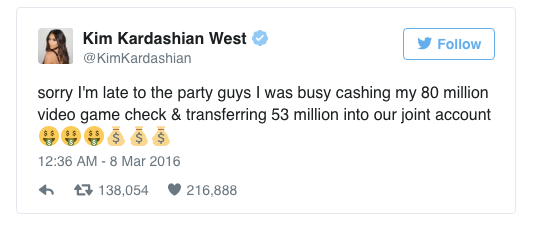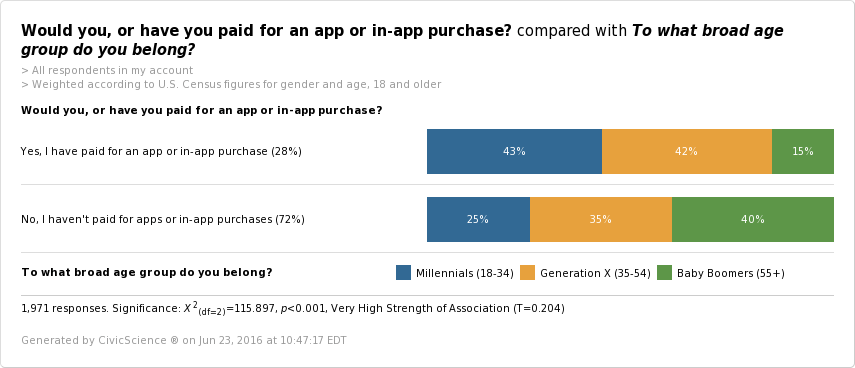It was the tweet that sent off cash registers across the globe.

Kim Kardashian’s tongue and cheek response to haters on Twitter (it’s a long story guys), exposed how lucrative her burgeoning career creating apps has been. In reality, Forbes estimated Mrs. West earned about half that amount (~$40 million), which is still no small chunk of change.
To many of us, the idea of paying for an app or extension of an app on our phones sounds ludicrous. Why would you pay for an app when you can get most for free? Why would you pay for something you can’t even touch, or bonuses in online games where you don’t actually win anything?
It might sound crazy, but according to Business of Apps, consumers are paying, and will continue to pay more for apps and in-app purchases:
- Paid-for app revenues growth forecast for 2017 is $1.95 billion
- In-app purchase revenues will reach $28.9 billion by 2017
Call us skeptical. We asked 1,971 US adults between 6/10-6/12/2016 about their experience with paid apps. The results are as follows:

Overwhelmingly, the majority answered no, they haven’t paid for apps, and they’re not planning to in the future. Grandparents are more likely to answer that they haven’t paid for an app. Those who responded no tended to be an older, suburban audience.

So who is buying apps or making in-app purchases? Those who responded yes are more likely to live in the Midwest. They also tended to be younger than those who have never paid for an app and were evenly split between male and female.
So does this mean all the above estimates of growth in the app space are wrong? Not necessarily. Together, both these pieces of data show a shift in what customers deem worth purchasing.
A younger audience who has grown up in an increasingly connected and digital world seem to have fewer qualms about buying a purely digital product. Whether it’s an in-app purchase for a power up in Candy Crush or a lifestyle app from the Kardashian empire, they value these experiences enough to put a monetary value on them. Younger consumers will continue to spend, but that’s still only a small portion of the market.
On the other hand, older consumers may be more hesitant to see the value in an in-app purchase. The entire transaction is digital, and at the end of the day, the only thing you get is on your screen.
The market will only grow if the consumer base grows, so developers should consider strategies to bring older audiences to the paid app space. It’s worth exploring apps that could sway older buyers into recognizing the value of a purely digital experience.
Does this mean we’ll be seeing a Meryl Streep branded lifestyle app? Probably not. But the way to unlock major sales in the app space could mean tapping into this audience.








